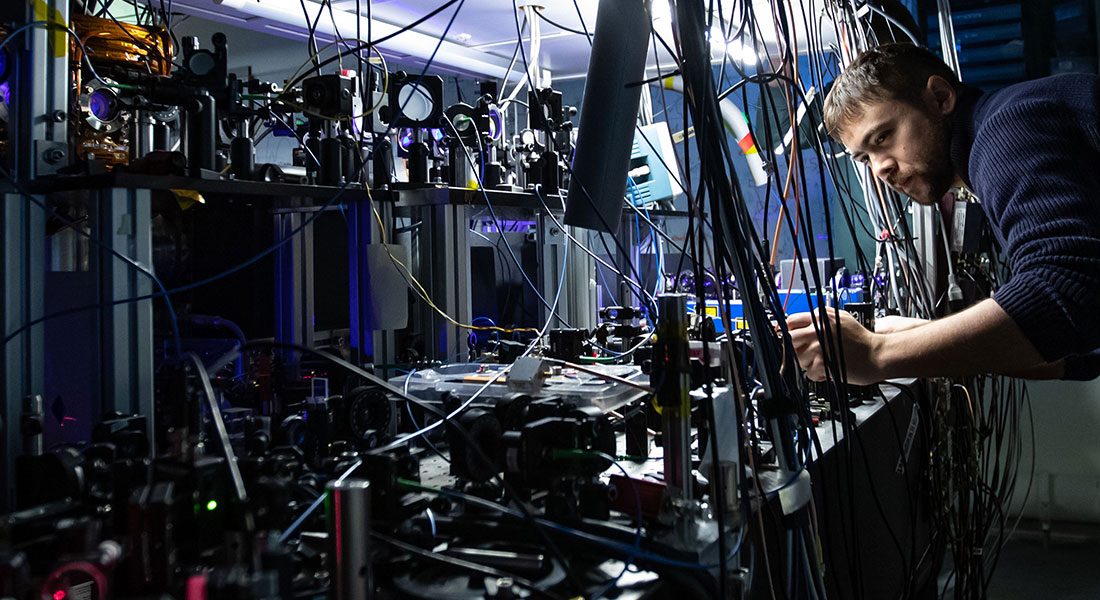PhD Defense: Eliot Bohr
Exploring superradiance for enhanced sensors
Quantum sensors such as atomic clocks, with their unprecedented accuracy and stability, have revolutionized fields ranging from fundamental physics to global positioning systems. To fully harness the variety of applications of these critically needed technologies, it is imperative to devise new methods that address both existing performance limitations and resilience to technical and environmental noise. In this thesis, we report on two experimental results which leverage collective effects of atoms within a cavity, applying tools of cavity quantum electrodynamics for advancing atomic clock technology.

In our first investigation, we employ superradiant pulses from the cavity mode as a fast and directed atomic population readout. This approach relies on an excitation threshold for superradiant emission, which occurs for a transversely driven atomic ensemble. We experimentally verify this threshold and map out a unique Ramsey spectroscopic lineshape. This lineshape is characterized by its near-zero photon emission zones where the pump laser detuning results in an excitation below the established threshold. Our technique induces significantly less heating compared to more common fluorescent state readouts. We demonstrate the potential for multiple Ramsey sequences within a single experimental cycle.
In our second investigation, we analyze the frequency spectrum of superradiant emission by extending the pulses using an incoherent repumping scheme. By tuning a repump laser’s frequency, we control and sustain steady-state lasing for over a millisecond. This allows us to observe a linewidth of the emitted light that is nearly an order of magnitude narrower than the transition linewidth. Our system operates in what is known as the ”bad cavity” regime, where the phase coherence in the laser is predominantly stored in the atoms rather than in the intracavity light field. Therefore, the emitted light is not only narrow in frequency, but also exhibits reduced sensitivity to cavity mirror vibrations- a prevailing challenge in contemporary atomic clocks.
Zoom link: https://us02web.zoom.us/j/2787399020
